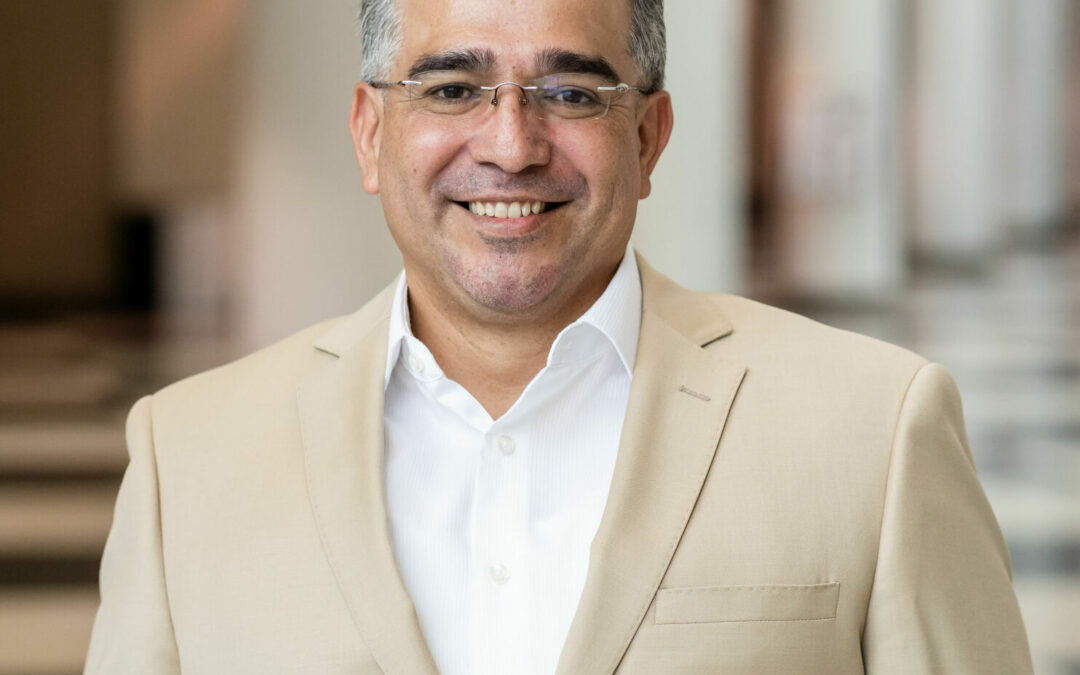Podcast: Play in new window | Download
Subscribe: Spotify | Email | RSS
On this week’s episode of The Leadership Habit podcast, Jenn DeWall talks to Jesse Hernandez about building more connected teams. Jesse runs a consulting business called Depth Builder, LLC, where he builds a community of intentional leaders in the construction industry.
Meet Jesse Hernandez– Author, Podcast Host and Team Builder
Jesus (Jesse) Hernandez was born and raised on the Southside of San Antonio, Texas.
The landscape of his Career ranges from grading ditches to counseling Executives. This path taught him that we are more alike than we are different. He leverages this experience by supporting Leaders towards deep connection and building trust through their improvement initiatives.
His message is one of Contribution, Ownership, and Vulnerability. This message is visible in his podcast Learnings and Missteps, his book Becoming the Promise You are Intended to Be and the Live Stream experience known as No BS with Jen & Jess.
Building Connected Teams Through Vulnerability
In this episode, Jenn and Jesse take a closer look at how teams work and how to create better team relationships. Jesse explains the importance of vulnerability in leadership:
“From a team perspective, there’s this funny thing that happens, and I really don’t know why. I am sure somebody’s researched it somewhere. But it’s like when we get into the first professional space, we all of a sudden can’t be us, right?
I behave as if when I show up to work, I’m not a goofball, I’m not a mess, I don’t have problems, I don’t have insecurities. I’m this professional avatar that’s on the clock, and I have to play the role.
And so, by playing the role, I have zero vulnerability, right? I’ve got to pretend. And because I have zero vulnerability, and let’s just say I’m at a leadership level, naturally, by the leadership level, the level of authority, there is an expectation that we all have of our leaders.
And so if my direct reports see me as, ‘Mr. Polished’ has everything together, everything in line, because I’m putting up that front, that compounds with my position and my title within the organization.
And that compounds in such a way that it creates a barrier between me and the people I’m serving. And when I say the people I’m serving, I’m talking in the truest form of being a leader. My job is to develop the people who report to me, develop their problem-solving capabilities, and help them grow their careers and their earning potential, right? That’s when I’m doing my job, that’s what’s happening.
Now, it’s very difficult for me to help people and connect with them in a transformational way when I have a barrier between me and them, but I create the barrier!
You hear the word vulnerability, and people kind of get squishy and roll their eyes like, oh, here we go, vulnerability again because they think– I mean, even I used to think– vulnerability meant I was gonna give you my pin number and my credit card number and my social security number because that’s like real vulnerability, right? I’m at risk by doing so.
It doesn’t have to be that big of a commitment. Saying, I don’t know, is a demonstration of vulnerability. Saying, I messed up, I’m scared, I’m overwhelmed, I’m not sure what the outcome is going to be. All of those things are demonstrations of vulnerability. When I do that as the leader or manager, I humanize myself.
When I embrace vulnerability, I give myself permission to be human, and I give my people permission to be themselves and ask the question that it’s gonna challenge them, right? They may not have the authority, but they’re gonna ask the hard question. Or they’re gonna say, yes, that does, that sounds like a really bad idea. What if X, Y, Z?
But they won’t do that if I haven’t demonstrated that I’m human because I always have the answer. They think they, too, must have the answer, and that just slows their growth and puts the burden on me to continue being Superman.”
Facilitating Team Connections with Emotional Bungee Jumpers
Later in the episode, Jenn asks Jesse to provide some insight about fostering connections between team members. Jesse explains:
“So I’m gonna get people really uncomfortable. So there’s two ways, and I’ll spill the beans and then it’s an invitation.
So we have a group called Emotional Bungee Jumpers. We meet once a month, and we practice all of the stuff that we’ve been talking about. We have a game that helps us get reps of doing the thing, like doing it for real. It’s valuable because, in the workspace, you have the pressure and the stress, right? You gotta perform. We’ve got metrics to hit, we got KPIs, and okay, we have everything. And so that extra stress kind of helps us say, ah, we’ll start that vulnerability stuff next week. So, but in this situation, it’s a bunch of awesome high-performing professionals in different industries, and we’re practicing <laugh>.
And so here’s the game– the name is Emotional Bungee Jumpers, and I know that’s a little scary for some people. But the game is this.
You’ve got three roles. One’s a problem owner, one’s a coach, and one’s an observer. Problem-Owner’s job is to be vulnerable and share a problem. Personal, professional, doesn’t matter. Doing it with a bunch of people you don’t really know that’s a little scary. Coach’s job is to only ask interested questions. No advice, no leading questions, no sneaky tells like, why don’t you, or have you ever thought about doing?
That’s not an interested question. That’s a tell, right? And so, for nine minutes, that’s what happens. They have the dialogue, and that’s difficult. You’re under the spotlight, everybody’s watching you. The Observer’s job is to document all the questions that the coach asks for the purpose of giving the coach feedback.
And so if the coach gave advice or asked the leading question or asked the closed ended question, the observer’s job is to say, coach, you did X, Y, Z. These were the numbers of violations that you had feedback.
A lot of times, the coach will say, well, it was really happening, da da. Like, Nope, nope, nope. The right answer is, thank you, <laugh>. And so we become aware of our tendencies to do these things.
Now, what normally happens is the observer, instead of just giving frank, direct factual feedback, say, you know, your eye contact was great, and your posture was awesome. But no feedback. What was their performance? Just tell them what you saw. And it surfaces, again, elevates our awareness of how uncomfortable or maybe how clouded our feedback is when we’re supposed to give it, even though that was the rule of the game.
And so, you know, I just painted the three different roles. Do that with your team and cycle everybody through each row. I promise you, I’ve done this with construction teams in the job trailer multiple times on multiple projects. I’ve done it virtually. I’ve done it in group settings.
In every single setting, two things happen. One, people say, holy moly, I suck at listening. And this vulnerability thing is tough. The other thing that happens is after the first round, right, like I said, nine minutes start a new team, nine minutes, the next group gets more vulnerable just because they got to see what vulnerability looked like, and they also got to see that the dang sky didn’t fall down. And so, if you wanna build connectivity with your teams, do that. Or come hang out with us on the emotional bungee jumpers.”
Where to Find More From Jesse Hernandez
Be sure to listen to the whole episode to learn more of Jesse’s insights and tips about building connected teams! You can also connect with him online:
Thanks for listening to The Leadership Habit podcast! Be sure to check out more episodes and explore our blogs, ebooks, upcoming webinars, and more!





